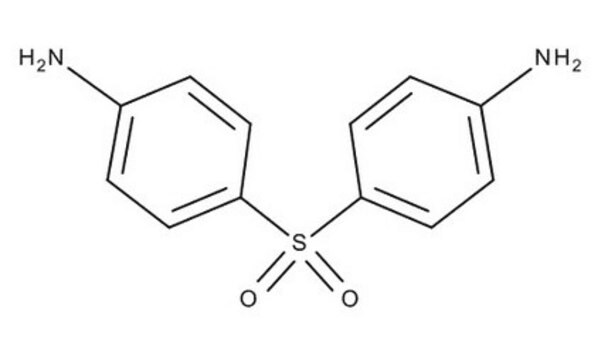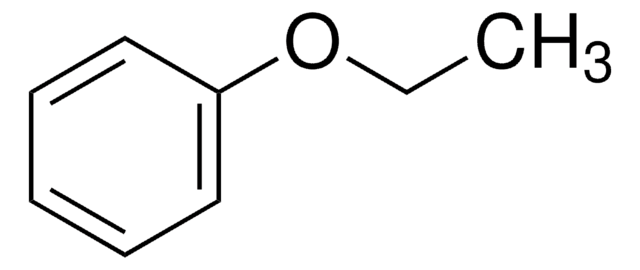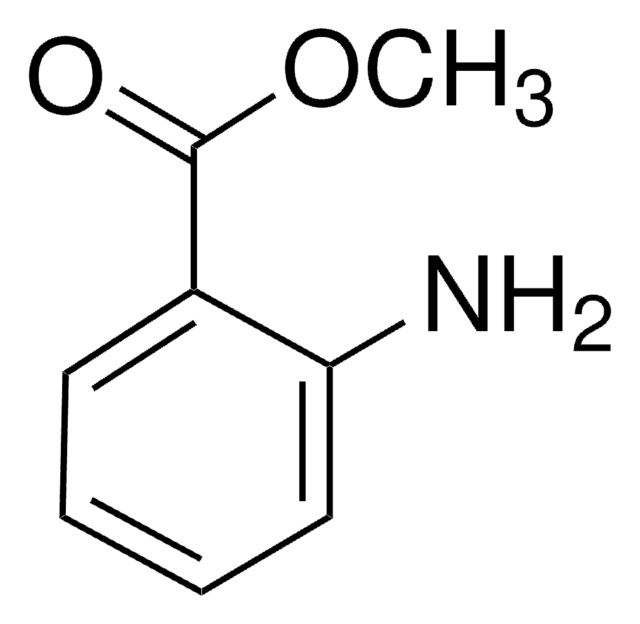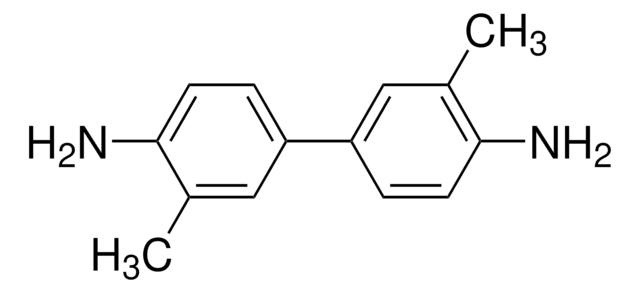M44451
4,4′-Methylenebis(N,N-dimethylaniline)
97.5 - 102.5% purity, powder, crystals or chunks
Sinonimo/i:
N,N,N′,N′-Tetramethyl-4,4′-diaminodiphenylmethane, N,N,N′,N′-Tetramethyl-4,4′-methylenedianiline, Arnolds base, Michlers base
About This Item
Prodotti consigliati
product name
4,4′-Methylenebis(N,N-dimethylaniline), 97.5% (GC)
Livello qualitativo
Saggio
97.5% (GC)
Forma fisica
powder, crystals or chunks
tecniche
titration: suitable
Colore
white to faint beige, to Tan
Punto di fusione
88-89 °C (lit.)
applicazioni
diagnostic assay manufacturing
hematology
histology
Temperatura di conservazione
room temp
Stringa SMILE
CN(C)c1ccc(Cc2ccc(cc2)N(C)C)cc1
InChI
1S/C17H22N2/c1-18(2)16-9-5-14(6-10-16)13-15-7-11-17(12-8-15)19(3)4/h5-12H,13H2,1-4H3
JNRLEMMIVRBKJE-UHFFFAOYSA-N
Cerchi prodotti simili? Visita Guida al confronto tra prodotti
Descrizione generale
Applicazioni
Azioni biochim/fisiol
Avvertenze
Danger
Indicazioni di pericolo
Consigli di prudenza
Classi di pericolo
Aquatic Acute 1 - Aquatic Chronic 1 - Carc. 1B
Codice della classe di stoccaggio
6.1C - Combustible acute toxic Cat.3 / toxic compounds or compounds which causing chronic effects
Classe di pericolosità dell'acqua (WGK)
WGK 3
Punto d’infiammabilità (°F)
352.4 °F - closed cup
Punto d’infiammabilità (°C)
178 °C - closed cup
Dispositivi di protezione individuale
Eyeshields, Gloves, type P3 (EN 143) respirator cartridges
Scegli una delle versioni più recenti:
Possiedi già questo prodotto?
I documenti relativi ai prodotti acquistati recentemente sono disponibili nell’Archivio dei documenti.
I clienti hanno visto anche
Il team dei nostri ricercatori vanta grande esperienza in tutte le aree della ricerca quali Life Science, scienza dei materiali, sintesi chimica, cromatografia, discipline analitiche, ecc..
Contatta l'Assistenza Tecnica.

















